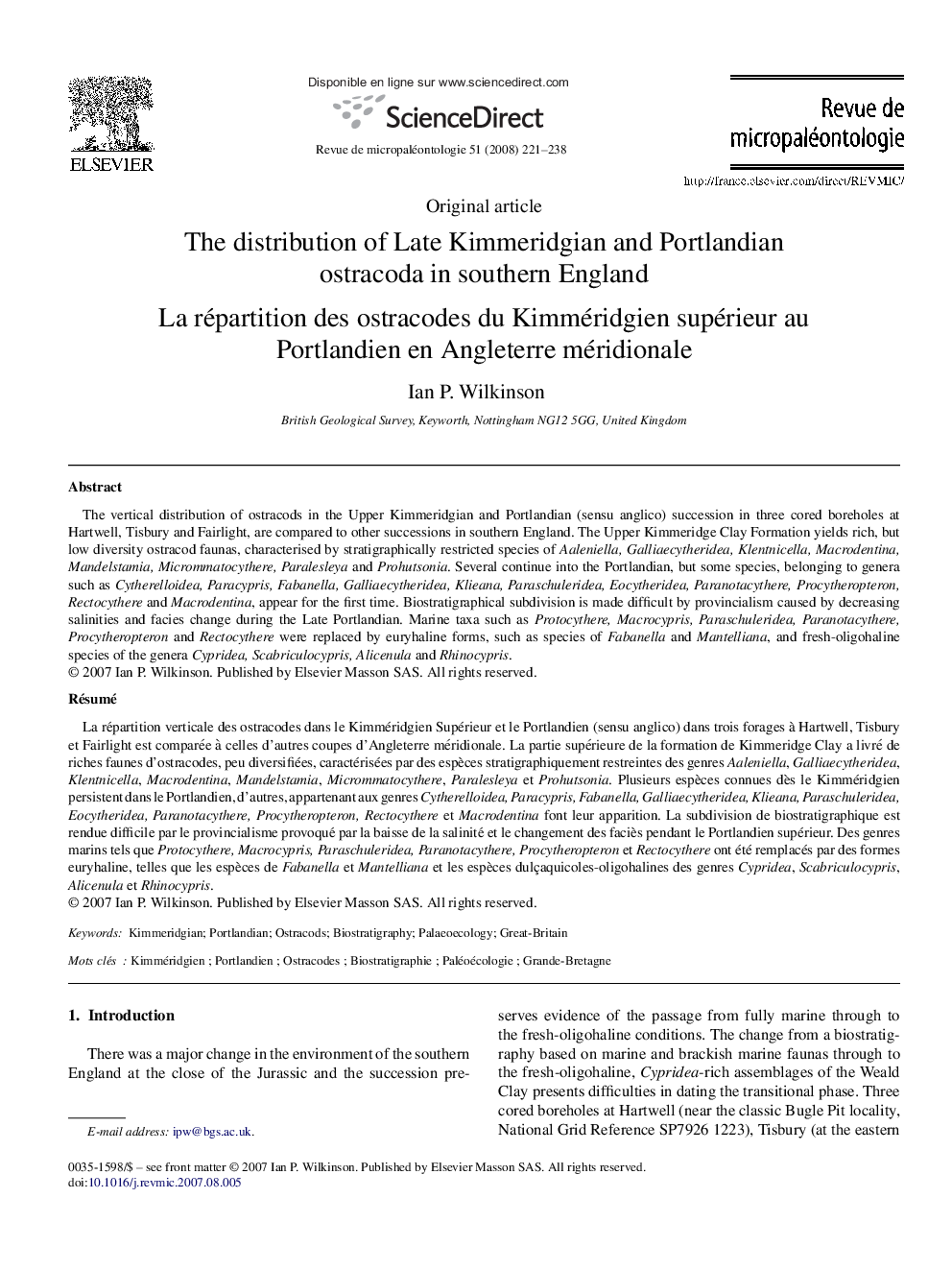| Article ID | Journal | Published Year | Pages | File Type |
|---|---|---|---|---|
| 4751649 | Revue de Micropaléontologie | 2008 | 18 Pages |
The vertical distribution of ostracods in the Upper Kimmeridgian and Portlandian (sensu anglico) succession in three cored boreholes at Hartwell, Tisbury and Fairlight, are compared to other successions in southern England. The Upper Kimmeridge Clay Formation yields rich, but low diversity ostracod faunas, characterised by stratigraphically restricted species of Aaleniella, Galliaecytheridea, Klentnicella, Macrodentina, Mandelstamia, Micrommatocythere, Paralesleya and Prohutsonia. Several continue into the Portlandian, but some species, belonging to genera such as Cytherelloidea, Paracypris, Fabanella, Galliaecytheridea, Klieana, Paraschuleridea, Eocytheridea, Paranotacythere, Procytheropteron, Rectocythere and Macrodentina, appear for the first time. Biostratigraphical subdivision is made difficult by provincialism caused by decreasing salinities and facies change during the Late Portlandian. Marine taxa such as Protocythere, Macrocypris, Paraschuleridea, Paranotacythere, Procytheropteron and Rectocythere were replaced by euryhaline forms, such as species of Fabanella and Mantelliana, and fresh-oligohaline species of the genera Cypridea, Scabriculocypris, Alicenula and Rhinocypris.
RésuméLa répartition verticale des ostracodes dans le Kimméridgien Supérieur et le Portlandien (sensu anglico) dans trois forages à Hartwell, Tisbury et Fairlight est comparée à celles d’autres coupes d’Angleterre méridionale. La partie supérieure de la formation de Kimmeridge Clay a livré de riches faunes d’ostracodes, peu diversifiées, caractérisées par des espèces stratigraphiquement restreintes des genres Aaleniella, Galliaecytheridea, Klentnicella, Macrodentina, Mandelstamia, Micrommatocythere, Paralesleya et Prohutsonia. Plusieurs espèces connues dès le Kimméridgien persistent dans le Portlandien, d’autres, appartenant aux genres Cytherelloidea, Paracypris, Fabanella, Galliaecytheridea, Klieana, Paraschuleridea, Eocytheridea, Paranotacythere, Procytheropteron, Rectocythere et Macrodentina font leur apparition. La subdivision de biostratigraphique est rendue difficile par le provincialisme provoqué par la baisse de la salinité et le changement des faciès pendant le Portlandien supérieur. Des genres marins tels que Protocythere, Macrocypris, Paraschuleridea, Paranotacythere, Procytheropteron et Rectocythere ont été remplacés par des formes euryhaline, telles que les espèces de Fabanella et Mantelliana et les espèces dulçaquicoles-oligohalines des genres Cypridea, Scabriculocypris, Alicenula et Rhinocypris.
